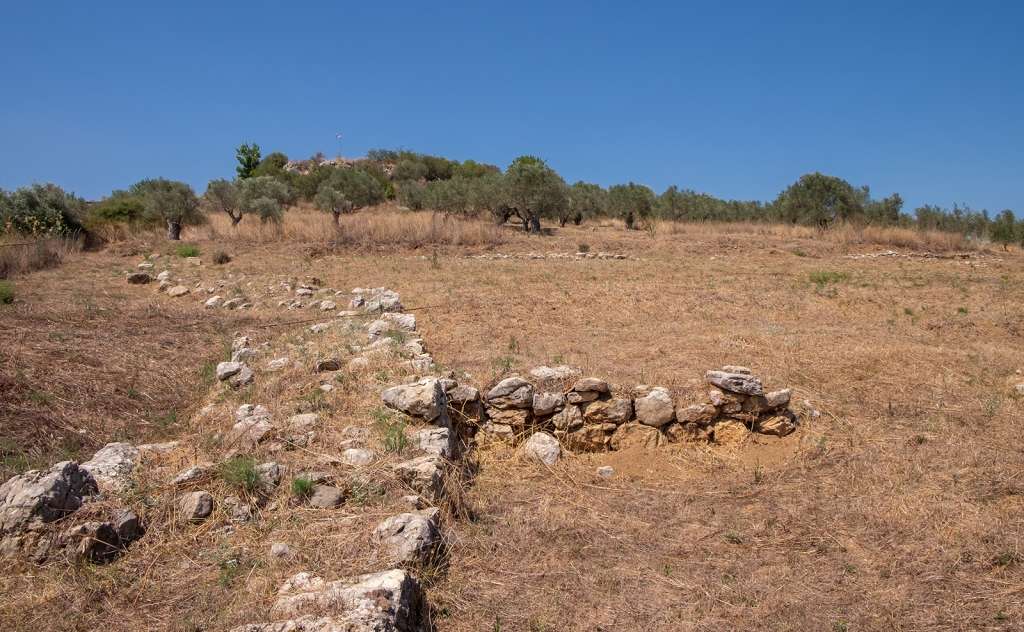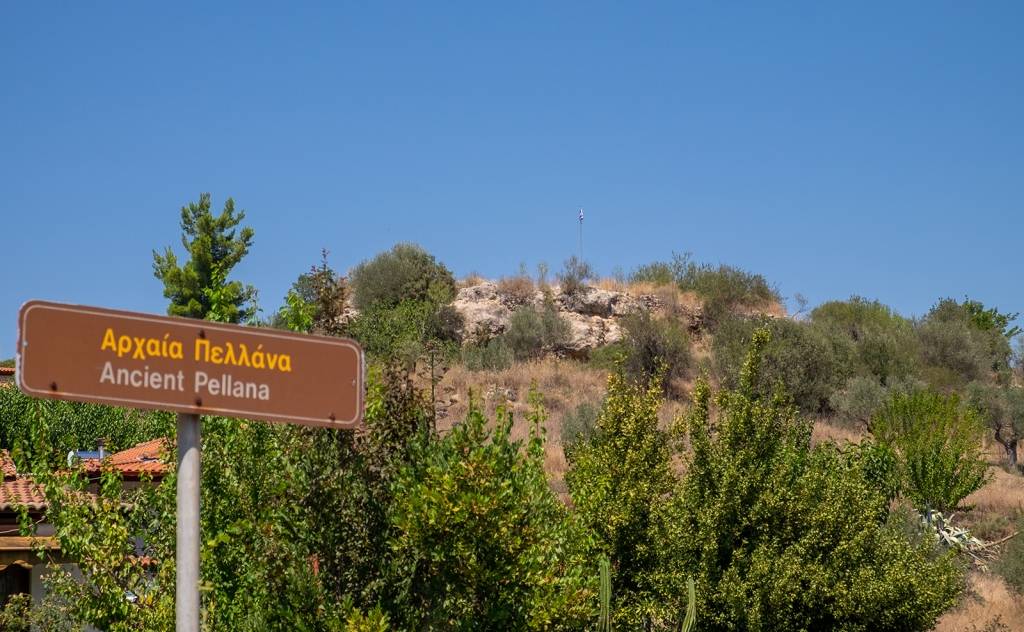Ancient Pellana
Pellana is a village at the foothills of Taygetos that is located 24 km from Sparta. Very close to the village, to the northeast, lies the archaeological site of ancient Pellana with relics of the Early Hellenistic, Mycenaean and Hellenistic times.
From ancient Pellana, in 1932, the village took its contemporary name. It used to be called Kalyvia. Specifically, there are two versions for the name of the village. In the first version, the name Pellana or Pellani comes from the word "pella", which means "stone" or "stony hill". According to the second version, Pellana was named after a girl from Pellania. According to tradition, the girl went to get water and slipped and fell in the spring – a small river. The veil she was wearing reached Laggia spring (today's Zoros). Thus, the village was named Pellana and the spring, Pellania spring. According to mythology, Tyndareus fled to Pellana because his brother Hippokoontas stole the throne of Sparta. Tyndareus was born in Pellana, along with the beautiful Leda, the twin brothers Kastoras and Polydefkis (the well-known Dioscuri), as well as Helen and Klytemnestra.
During the Mycenaean period, large vaulted tombs were built, and in the 4th or 3rd century BC, when Sparta was in great danger, it walled the Acropolis of Pellana. In his Laconica scripts, Pausanias mentions the wall and the sanctuary of Asclepius, south of the Pellanida spring. Today, vertebrae of striped columns are preserved, while vases, idols and tributes to Asclepius or a Nymph were found near the spring. In other words, in ancient times, ancient Pellana was an advanced outpost of Sparta since it was in a unique, even, smooth location towards Arcadia. Its development was conformed to the development of Sparta, and when it declined, so did Pellana.
Xenophon calls it Pellini (Ell. 7,5,9), while Strabon refers to it as Pellana (VIII, 5). Plutarch also named the city Pellini (Agis, 8). The first to be mentioned in Pellana in modern times is archaeologist Leake, who, in 1808, discovered the ruins of a Greek city wall on the rocky hill. He writes characteristically: "Here are the ruins of a wall of a Greek city that at its peak had 5,000 inhabitants and dominated the entire beautiful and lush plain between Taygetos and Parnon, about 100,000 acres."
At Pellana, Romaios (Curator of Antiquities) was the one who excavated for the first time and then in 1926, Th. Karachalios. During the excavations, a Mycenaean cemetery was found at Spilies (750 metres from the centre of the village). The vases found are kept in the Sparta Archaeological Museum. On the chamber floor, four carved graves were found with bones in disorder. This element confirms that the graves held many dead people and the fact that they had been looted in earlier times. The largest of them is a royal one of the Early Mycenaean period, dating back to around 1500 BC. Its dome is over 10 metres in diameter, and its roof has collapsed and is protected by a metal one today. It probably belongs to Tyndaros or Menelaos. In the 1950s, at the Bezestenia area, a Byzantine-era stone pavement and ancient tombs were found. Later, the archaeological excavation brought to light coins, vases, and two statues at the same site. Unfortunately, the statues do not exist today.
On the south slope of Paleokastro hill, relics of an Early Hellenistic settlement that dates back to 2500 BC were discovered. It is thought to be the Palace of Menelaus and Beautiful Helen, described in detail by Homer in Odyssey, on the occasion of the visit of Telemachus and Peisistratos to Lakedaimona shortly before the end of the Mycenaean state. The Palace consists of the Grand Palace and a complex of sanctuaries, warehouses, workshops and other functional areas. Finally, in the Acropolis of Pellana, there are sections of walls of the Hellenistic period and remnants of the Frankish years.





